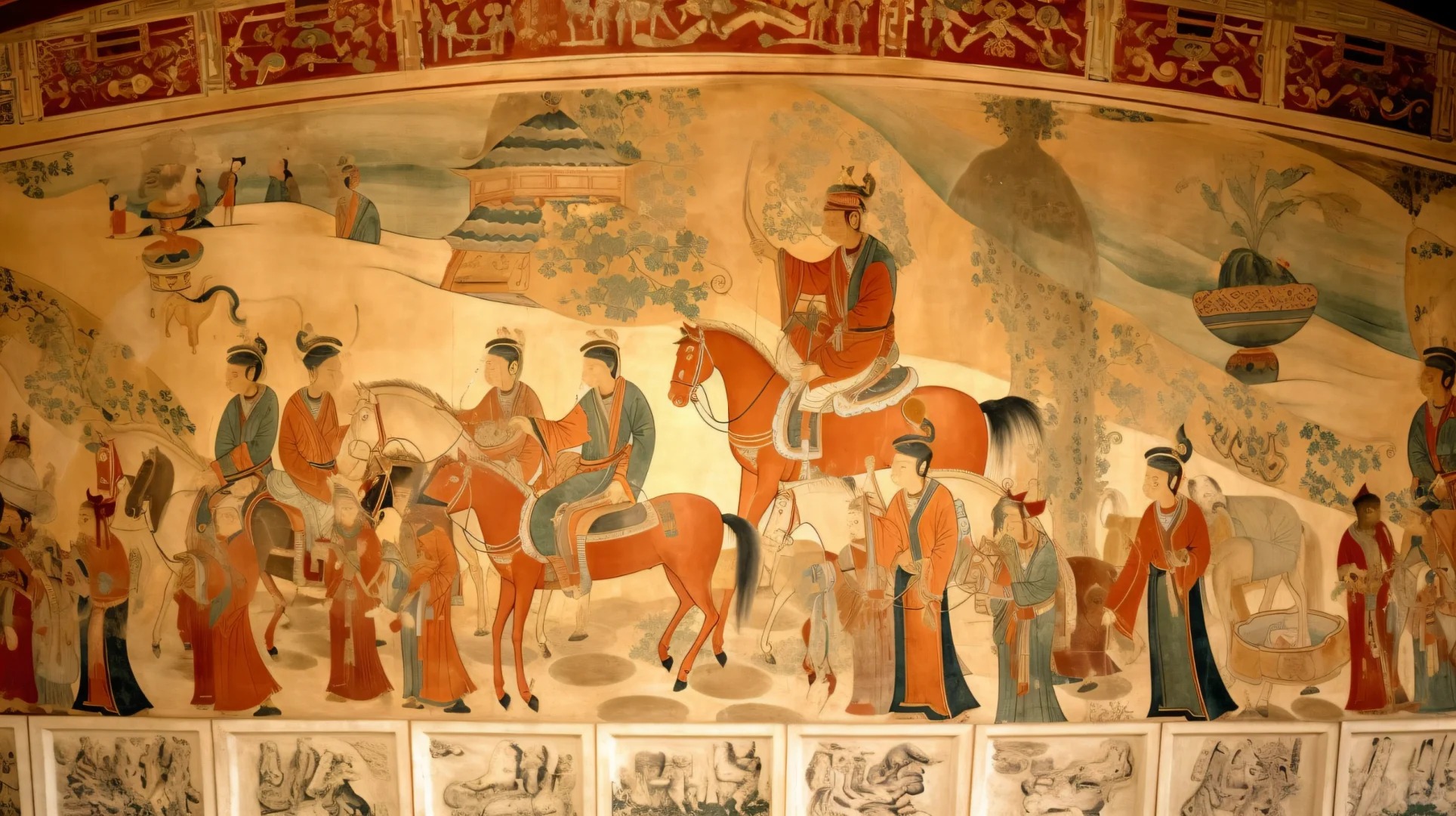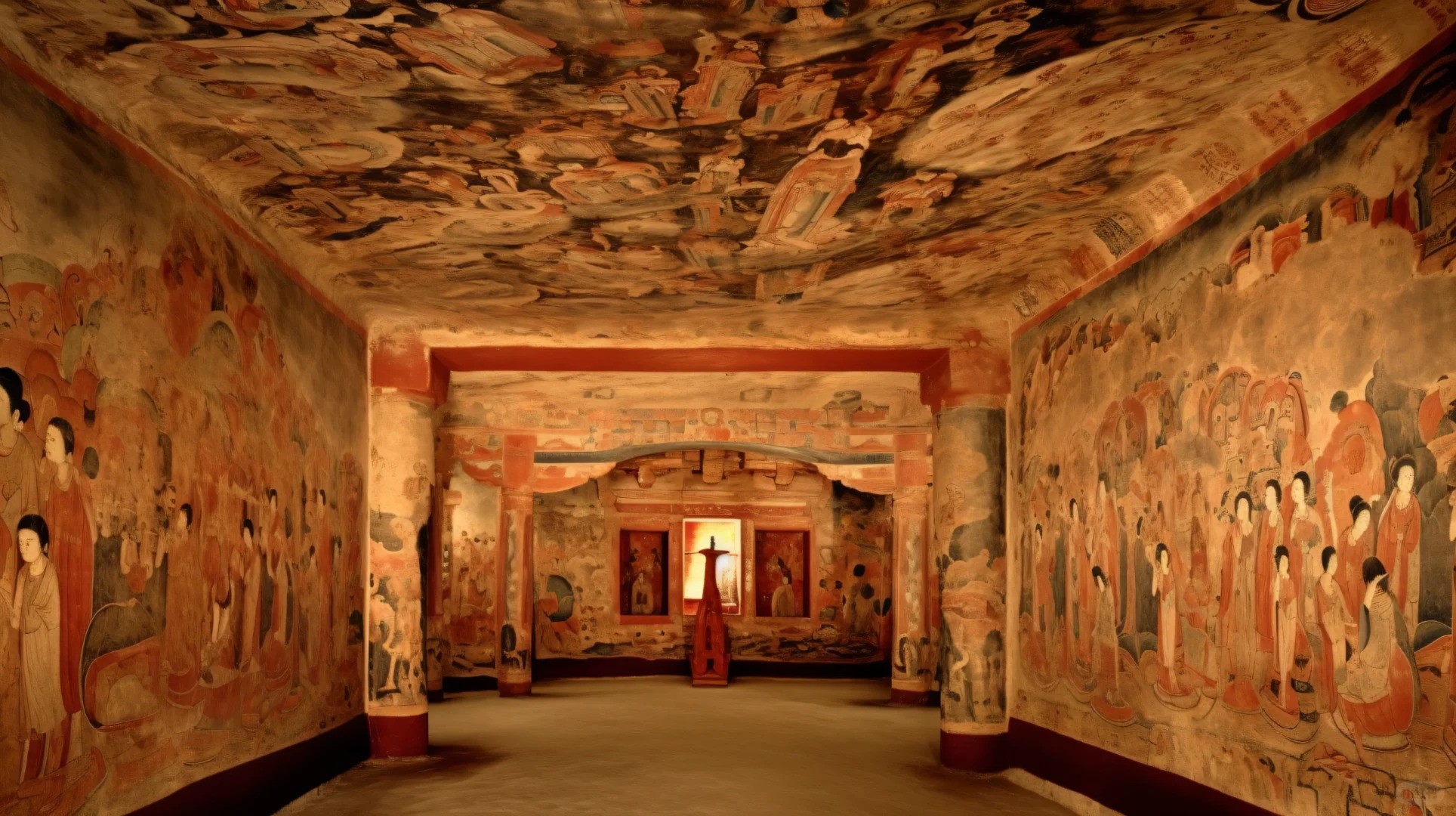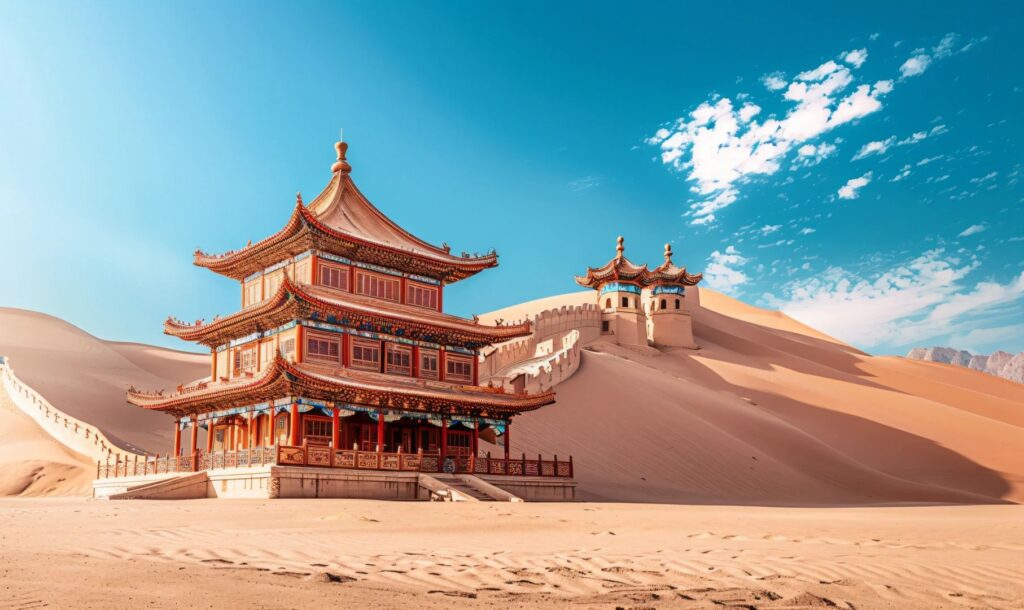Visiting Information
| Information | Details |
|---|---|
| Chinese Name | 敦煌莫高窟 (Dūnhuáng Mògāo Kū) |
| Location and Address | Mogao Caves, Dunhuang, Jiuquan, Gansu Province, China |
| Opening Time/Hours | 8:00 AM – 6:00 PM (May to October) 9:00 AM – 5:30 PM (November to April) |
| Entrance Fee | 258 CNY (May to October) 238 CNY (November to April) Includes Digital Exhibition Center and shuttle bus |
| How to Get There | By Metro: Not applicable By Bus: Take Bus 3 from Dunhuang City to Mogao Caves By Taxi: About 30-minute drive from Dunhuang City |
| Best Time for Visit | May to October, when the weather is pleasant and all caves are open |
| Contact Info | +86 937 8869001 Email: [email protected] |
Overview
The Dunhuang Mogao Caves, also known as the Thousand Buddha Grottoes, is a system of 492 temples carved into the cliffs above the Dachuan River in Gansu Province, China. This UNESCO World Heritage site is renowned for its stunning Buddhist art and manuscripts, spanning a period of 1,000 years from the 4th to the 14th centuries.
Historical Background
The Mogao Caves were first carved out in 366 AD by a Buddhist monk named Yuezun, who reportedly had a vision of a thousand Buddhas bathed in golden light. Over the centuries, pilgrims traveling along the Silk Road added more caves and artwork, turning the site into a major Buddhist center. The caves were largely forgotten and abandoned in the 14th century, rediscovered in the early 20th century by Western explorers and Chinese archaeologists.

Architectural Features
- Cave Structures: The caves are carved into the eastern cliff face of Mingsha Mountain, spanning about 1.6 kilometers from south to north. They are arranged in five levels, with sizes ranging from small personal meditation cells to large halls used for congregations.
- Murals: The caves contain over 45,000 square meters of murals, depicting Buddhist stories, historical events, and scenes from daily life. These paintings showcase the evolution of Chinese art over a millennium.
- Sculptures: Over 2,000 painted clay sculptures adorn the caves, ranging from small figurines to colossal statues. The largest Buddha statue is 35.5 meters tall, located in Cave 96.
- Library Cave: Cave 17, discovered in 1900, contained a vast collection of ancient manuscripts, including the world’s earliest dated printed book. This discovery revolutionized the understanding of the history of printing.
Cultural Importance
The Mogao Caves represent a unique confluence of art, religion, and culture along the Silk Road. They provide invaluable insights into the spread of Buddhism in China and the cultural exchanges between East and West. The artworks and manuscripts found here have greatly contributed to our understanding of medieval Chinese and Central Asian history, art, religion, and daily life.
Surrounding Attractions
- Crescent Lake and Mingsha Mountain: Located about 6 km south of Dunhuang, this oasis in the desert features a crescent-shaped lake surrounded by massive sand dunes. Visitors can enjoy camel rides, sand sledding, and beautiful sunset views.
- Yumen Pass: Also known as the Jade Gate Pass, this was a strategic point on the ancient Silk Road. Located about 90 km northwest of Dunhuang, it offers a glimpse into the region’s historical importance in trade and defense.
- Dunhuang Museum: This museum in Dunhuang city houses a collection of artifacts from the Mogao Caves and the surrounding region, providing context and background information for visitors to the caves.

Photography Opportunities
- Cave Entrances: The exterior view of the caves carved into the cliff face offers a striking panorama, especially during sunrise or sunset when the light creates dramatic shadows.
- Surrounding Landscape: The desert landscape around the Mogao Caves, including the nearby Dachuan River, provides opportunities for stunning nature photography.
- Digital Exhibition Center: While photography is not allowed inside the actual caves to preserve the artwork, the Digital Exhibition Center offers high-quality reproductions of the murals and sculptures that can be photographed.
Modern Importance
- Archaeological Research: The Mogao Caves continue to be an important site for archaeological and art historical research, providing insights into ancient techniques, materials, and cultural exchanges.
- Conservation Efforts: The site serves as a focal point for developing and implementing advanced conservation techniques for ancient art and architecture in challenging environmental conditions.
- Cultural Tourism: As a major tourist attraction, the Mogao Caves contribute significantly to the local economy and promote cultural exchange and understanding on an international level.
- Digital Preservation: The ongoing digitization of the caves’ artwork is pioneering new methods for preserving and studying cultural heritage, making these treasures accessible to researchers and the public worldwide.

FAQ
- What are the Dunhuang Mogao Caves famous for?
The Dunhuang Mogao Caves are famous for their extensive collection of Buddhist art, including murals, sculptures, and ancient manuscripts, spanning over 1,000 years of Chinese history. - What’s inside the Dunhuang Mogao Caves?
Inside the Dunhuang Mogao Caves, visitors can find hundreds of cave temples containing Buddhist murals, painted sculptures, and architectural features. There’s also a Digital Exhibition Center showcasing high-resolution images of the artwork. - Are the Dunhuang Mogao Caves free?
No, the Dunhuang Mogao Caves are not free. There is an entrance fee of 258 CNY from May to October and 238 CNY from November to April, which includes access to the Digital Exhibition Center and shuttle bus service. - Are the Dunhuang Mogao Caves worth visiting?
Yes, the Dunhuang Mogao Caves are definitely worth visiting. They offer a unique insight into Buddhist art, Chinese history, and the cultural exchanges along the Silk Road. The site is considered one of the most important Buddhist art treasures in the world. - What to do in the Dunhuang Mogao Caves?
Visitors can explore selected caves with a guide, visit the Digital Exhibition Center to see detailed reproductions of the artwork, learn about the history and significance of the site, and enjoy the surrounding desert landscape. - How do I get to the Dunhuang Mogao Caves in the local city?
From Dunhuang city, you can take Bus 3 directly to the Mogao Caves, which takes about 30 minutes. Alternatively, you can take a taxi from the city center, which also takes around 30 minutes. - How to visit the Dunhuang Mogao Caves?
To visit the Dunhuang Mogao Caves, it’s recommended to book tickets in advance, especially during peak season. Start at the Digital Exhibition Center in Dunhuang city, then take the shuttle bus to the cave site. Guided tours are provided, and visitors are typically shown 8-10 caves. Photography is not allowed inside the caves to protect the ancient artwork. Allow at least half a day for the visit.



